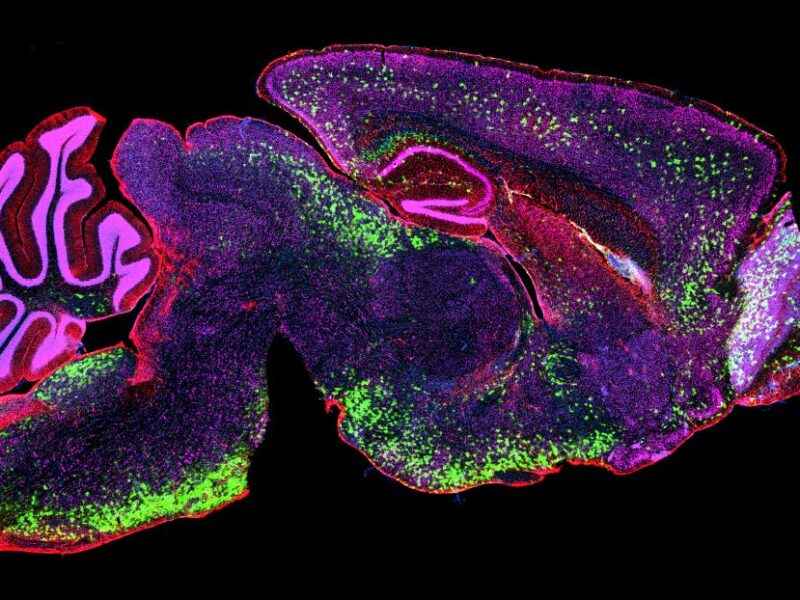How Have Respiratory Outcomes Changed With New Spinal Muscular Atrophy Treatments?
How Have Respiratory Outcomes Changed With New Spinal Muscular Atrophy Treatments? https://pediatricsnationwide.org/wp-content/uploads/2021/02/AdobeStock_126797930_lung-header-1024x575.gif 1024 575 Mary Bates, PhD Mary Bates, PhD https://secure.gravatar.com/avatar/c6233ca2b7754ab7c4c820e14eb518c8?s=96&d=mm&r=g- December 02, 2020
- Mary Bates, PhD

The last five years have brought major advances in the treatment of spinal muscular atrophy (SMA), including three FDA-approved therapies and more in the research pipeline. In a new review, researchers at Nationwide Children’s discuss the impact of these novel therapies on respiratory outcomes and highlight the need for long-term data and continued monitoring of SMA patients.
Clinical outcomes for children with SMA have changed with the recent availability of three new treatments: intrathecal nusinersen (approved by the FDA in December 2016), intravenous onasemnogene abeparvovec‐xioi (FDA-approved in May 2019), and enteral risdiplam (FDA-approved in August 2020).
Most studies have demonstrated favorable responses in overall muscle strength with these treatments, but respiratory outcomes vary. The degree of improvement depends upon SMA genotype, severity of baseline impairment, the medication used, and the timing of the first dose.
With onasemnogene abeparvovec‐xioi, a gene replacement therapy that was developed at Nationwide Children’s, a single intravenous dose of the medicine has led to improvements in muscle strength and less dependence on noninvasive ventilation.
“These kids would have not have survived without any kind of respiratory support,” says Richard Shell, MD, section chief of the department of pulmonary medicine at Nationwide Children’s and one of the study’s authors. “Now, three of them are walking and more of them are eating orally and do not require ventilation support.”
Dr. Shell says there have also been significant benefits following the other two treatments, although again, it is dependent on factors like SMA subtype and age at treatment. Due to the rarity of SMA and the expense of treatments, current data on therapeutic outcomes are from small numbers of patients from multiple medical centers across the world. He and his co-authors advocate for more multicenter trials to substantiate the impact and effectiveness of these new therapies.
Grace Paul, MD, a pediatric pulmonologist at Nationwide Children’s and another of the review’s authors, says that monitoring of short- and long-term outcomes is still critical, as it is too early to determine sustained improvement in respiratory function.
“Even though we are seeing great results with these drugs, we are still cautious about continuing our surveillance of these patients with pulmonary function tests and sleep studies,” she says. “These kids may get weaker when they are sick; we do not know if one child is going to respond to a medication the same as another child.”
Since earlier treatment with any of these new therapies appears to lead to the best outcomes, Dr. Paul emphasizes the importance of early screening.
“Early intervention is vital,” she says. “Newborn screening for SMA was introduced in 2018 and is currently implemented in 33 states, including Ohio.”
Moving forward, the authors expect to manage SMA patients with a spectrum of disease severity. Close monitoring of respiratory outcomes, including pulmonary function, sleep-disordered breathing, and nutritional well-being, will be essential for the design of future studies, the use of combination therapies, and the evaluation of long-term outcomes.
“There are a lot of unknowns moving forward because these drugs have only been available for a few years now,” says Dr. Shell, who is also a professor of pediatrics at The Ohio State University College of Medicine. “We do not know what a baby who gets gene therapy is going to look like when they are 20 years old.
“We expect long-term outcomes to be great, but there might be some subtle things that long-term monitoring could pick up.”
Reference:
Paul G, Gushue C, Kotha K, Shell R. The respiratory impact of novel therapies for spinal muscular atrophy. Pediatric Pulmonology. Published online October 24, 2020. doi:10.1002/ppul.25135.
Image credit: Adobe Stock
About the author
Mary a freelance science writer and blogger based in Boston. Her favorite topics include biology, psychology, neuroscience, ecology, and animal behavior. She has a BA in Biology-Psychology with a minor in English from Skidmore College in Saratoga Springs, NY, and a PhD from Brown University, where she researched bat echolocation and bullfrog chorusing.
-
Mary Bates, PhDhttps://pediatricsnationwide.org/author/mary-bates-phd/December 27, 2016
-
Mary Bates, PhDhttps://pediatricsnationwide.org/author/mary-bates-phd/
-
Mary Bates, PhDhttps://pediatricsnationwide.org/author/mary-bates-phd/
-
Mary Bates, PhDhttps://pediatricsnationwide.org/author/mary-bates-phd/
- Posted In:
- In Brief






